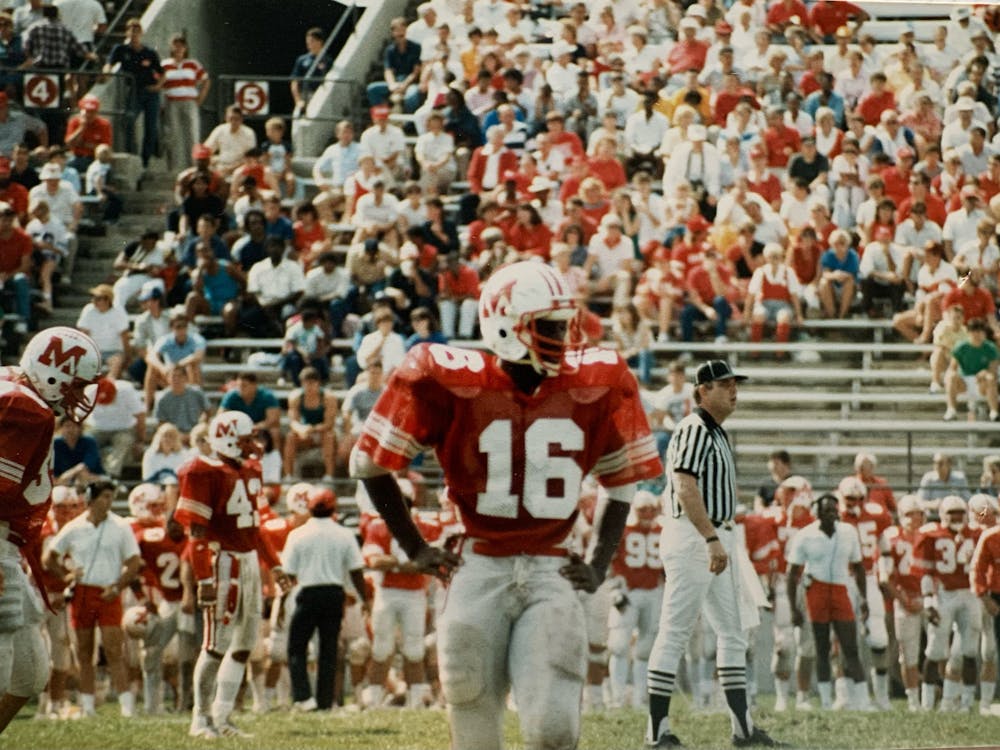The Miami University athletic department purchases approximately 10,000 football tickets per game with student fee money to meet the quota to remain a Division I-A football program. According to NCAA Bylaw 20.9.9.3, this practice is completely legal.
The bylaw requires each school in the Football Bowl Subdivision (FBS) to "[a]verage at least 15,000 in actual or paid attendance for all home football contests over a rolling two-year period."
The phrase "actual or paid" allows schools to buy tickets to reach this threshold.
The money Miami uses to buy its own tickets comes from the Intercollegiate Athlete fee students pay every semester. For the 2019 fiscal year, each student paid an average of $1,044.87.
For the 2016 and 2017 Miami football seasons, there was a large discrepancy between scanned and announced tickets. Scanned indicates how many actual attendees entered the stadium, while announced indicates the attendance number shared with the public.The difference is how many tickets the athletic department bought on its own.
In 2016, there was an average of 12,531 tickets bought by the athletic department for each game. The average was 10,514 per game in 2017 and 11,772 per game in 2018. In total, 58,861 tickets were bought by the athletic department over the course of the five games hosted at Yager Stadium during the 2018 football season.
Miami's 2016 season-opener, played against Eastern Illinois University, produced a scanned attendance of 2,845 people. But, that number was multiplied over sixfold when Miami released the announced number -- 17,369.
In Miami's game against University of Cincinnati during the 2017 season, 13,006 people attended, but 21,881 were announced.
With the RedHawks fighting for bowl eligibility against Ball State University during the 2018 season, 2,360 people attended the game. The announced attendance was 17,917 people.
Director of Athletics David Sayler and Deputy Athletic Director Jude Killy declined to comment on the ticket buying process.
Associate Athletic Director for Revenue Generation D'Angelo Solomon and Assistant Athletic Director for Business Operations and Services Liz Bath did not respond for comment by publication.
The Wall Street Journal released an article in August 2018 discussing the growing problem of college football attendance across all Division I-A conferences. It listed Miami as an "attendance gap leader," indicating that for the 2017 football season, it fell fifth in line for schools that have the highest percentage of tickets bought by its own athletic department.
Enjoy what you're reading?
Signup for our newsletter
Only 36.1 percent of the tickets announced in the 2017 football season were actually scanned.
Even schools in larger conferences, such as the Big Ten and Southeastern, boost their numbers. The University of Wisconsin in the Big Ten Conference announced a total of 551,776 attendees for their 2017 football season when only 465,379 scanned in.
The University of Alabama in the Southeastern Conference announced 712,053 in the 2017 football season, when it scanned in 546,488. The Crimson Tide won the National Championship at the end of that season.
beysc@miamioh.edu \0x0C



